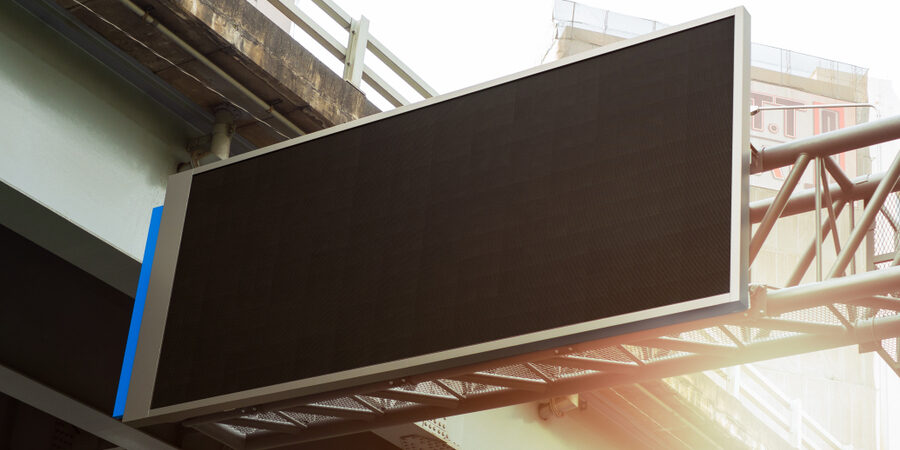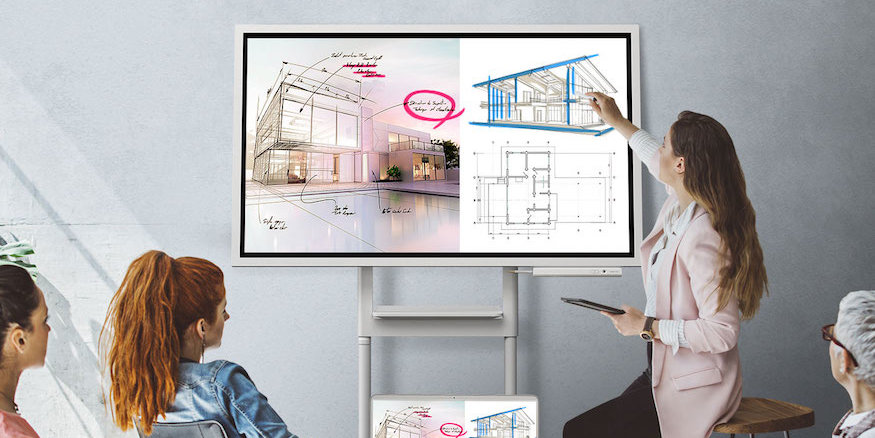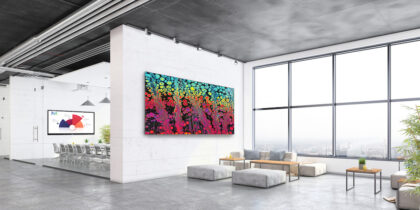Over the past few years, the number of digital billboards in the United States has risen dramatically, from just over 6,000 in 2016 to over 9,000 in 2020 — and continues to grow steadily. As more advertisers harness the power of digital out-of-home (DOOH) solutions, concerns about the safety of digital displays have been making headlines.
In May 2019, a massive LED wall collapsed at an events center in Las Vegas, prompting buzz, photos and speculation to circulate on social media. Aside from the rumored costs of damage resulting from the accident, visitors and industry professionals alike asked how this happened and what venues should do in the future to avoid similar incidents.
As a large-scale LED display provider, Samsung considers safety to be a core value in its business. Without strict protocols and safety procedures from manufacturing to service checks, Samsung wouldn’t be able to install giant LED boards in high-traffic, public areas like Times Square and the Las Vegas strip.
We’ve put together a few considerations to keep in mind when installing and operating digital displays to ensure the DOOH solution is in good hands. The safety of an LED board begins with the integrity of the product’s manufacturer.
Use licensed contractors and installers
Some providers operate at a lower price point by cutting corners after the production of their displays. They might sell a display and then walk away with little to no plan of how to ensure its performance. Therefore, it’s critical to go with a provider that will see the project through installation and have a maintenance plan in place for the lifetime of the warranty.
Many of Samsung’s projects have on-site project managers to ensure the installation crew follows strict safety and documentation procedures. For smaller projects, third-party installation contractors must go through Samsung’s training and certification process.
How to plan and deploy LED digital signage
Discover the unique advantages of direct view LED technology over traditional LCD displays. Download Now
Senior Director of Construction Management at Samsung Neil Hawley said licensing and training is essential when it comes to installing LED boards. “If you just contract out to anybody and they aren’t licensed, they can’t be held liable and they’re actually breaking the law by installing the display,” he says.
Hawley also said Samsung’s training ensures quality control across all projects, big and small. According to Hawley, thorough documentation is key to making sure things are up and running properly.
“At the end of every day, our crew on-site sits down and fills out a report with historical data: photographs of how things were installed, how they were started up and their condition at the point of installation,” he said. “If we know they’re following our procedures every single time, we can guarantee our quality.”
Local zoning and permitting
Another critical step in installing an LED display is ensuring the correct permits are in place and in compliance with local regulations. Zoning regulations can vary between countries, states, cities and sometimes even sides of a street. A licensed and qualified installation contractor will know the regulations of the area and can assist when applying for permits.
Samsung sometimes lobbies on behalf of its customers or helps them work through the local legislative authorities to modify outdated ordinances that don’t accommodate digital displays. Samsung sales reps often travel to testify before city councils or local planning committees to persuade regulators that the proposed sign is safe and ultimately a benefit to the public.
Mounting and structural safety
The mounting system and its installation are a critical part of the physical safety of installing large-scale displays, for both viewers and the maintenance workers who come later.
Once a digital display is mounted on a building, it’s much harder to access the device to change any structural issues that might arise. Again, a reputable sign company should have a structural plan in place dependent on the environmental factors of the device’s location. If installations are being done in a unique location, such as a historical structure, or mounting displays to a less-common surface, it’s important to work with experts on those particular locations, environments or surfaces.
Any jobs for which Samsung is responsible for the installation, it’s also responsible for the engineering of the actual attachment and mounting structure. Hawley said all mounting structures are designed by a local structural engineer who conducts an analysis of both the device and its environmental factors.
“These engineers have a professional license in the state or country we’re operating in, that way it’s been reviewed at a governmental level and the mounting structure fits within the safety standards of the area,” Hawley said.
These factors include things like wind, snow and hurricane loads, with loads referring to the force put on a structure from an environment’s impact. Hawley said even the airflow in an arena can add wind loads to indoor displays.
“It’s extremely important these designs are reviewed and stamped by a structural engineer because you don’t want to mount a display that weighs a couple hundred thousand pounds to a roof that hasn’t been analyzed.”
Why Samsung
Keep these video wall design considerations in mind when tempted to purchase a less expensive LED board, and do some due diligence — look at LED products that are five or ten years old and talk to previous customers about their experience. If someone has had constant problems with their LED product, it’s typically a sign of poor quality control or a lack of follow-up on the part of the manufacturer.
The safety of an LED board starts at its production but certainly doesn’t end there. Successful and safe digital signage installations require coordination between the device’s manufacturer, the installation crew, structural engineers and relevant regulatory agencies. Samsung prides itself on being a one-stop shop, a partner that’s well-versed in both the technicalities of digital displays and the project management side of deploying large-scale LED signs.
When investing in a piece of technology, it’s crucial to go with a company that evokes trust. Partnering with Samsung means getting its long history and deep understanding of the signage market paired with credibility and vast resources. Buying from Samsung isn’t just getting a top-of-the-line LED display, but also the promise of a long term partner — a partner who is committed to being involved in every step of the installation and deployment process.
Find the right LED technology for your next digital display project. Ready to go, but not sure where to start? Take this quick assessment to discover the right display tech for your space, style and budget.








